Blog by yesitalyeducation | Digital Diary
" To Present local Business identity in front of global market"
" To Present local Business identity in front of global market"
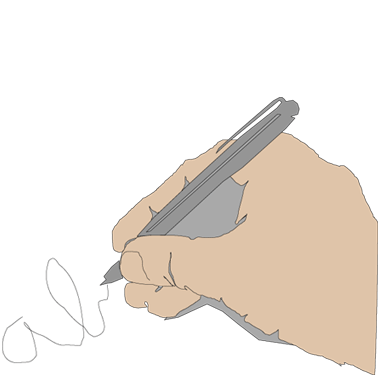 Digital Diary Submit Post
Digital Diary Submit Post
 Italy is one of the most popular destinations for international students. Known for its rich culture, world-class universities, and affordable education, it attracts thousands of applicants every year. If you are planning to pursue your education or even an MBA in Italy, getting a study visa for Italy is the first step. This guide will walk you through the requirements, documents, and process in a...
Read More
Italy is one of the most popular destinations for international students. Known for its rich culture, world-class universities, and affordable education, it attracts thousands of applicants every year. If you are planning to pursue your education or even an MBA in Italy, getting a study visa for Italy is the first step. This guide will walk you through the requirements, documents, and process in a...
Read More
Italy is one of the most popular destinations for international students. Known for its rich culture, world-class universities, and affordable education, it attracts thousands of applicants every year. If you are planning to pursue your education or even an MBA in Italy, getting a study visa for Italy is the first step.
This guide will walk you through the requirements, documents, and process in a simple and useful way so that you can prepare without confusion.
Before diving into visa requirements, it's worth knowing why students prefer Italy:
Globally recognized universities and programs.
Affordable tuition fees compared to other European countries.
Opportunities to pursue specializations like MBA in Italy with industry exposure.
Access to part-time work while studying.
A multicultural environment with students from around the world.
These benefits make Italy one of the top destinations for international students, and the student visa in Italy is the key to starting your journey.
Italy offers two main types of visas for students:
Type C Visa (Short Stay): For programs or courses lasting less than 90 days. Ideal for summer schools, language courses, or short training.
Type D Visa (Long Stay): For courses longer than 90 days, such as bachelor's, master's, or an MBA in Italy.
Most international students apply for the Type D visa as degree programs typically last more than a year.
When applying for a student visa in Italy, you must meet certain basic requirements. These include:
Admission to a Recognized Institution
You must have an official acceptance letter from a university or college in Italy. Without proof of admission, your visa application will not be considered.
Valid Passport
Your passport must be valid for at least three months beyond the course duration and have at least two blank pages.
Proof of Financial Means
Students must show evidence of sufficient funds to cover tuition fees, living expenses, and travel. This can be demonstrated through bank statements, scholarship confirmation, or sponsor letters.
Health Insurance
International students need valid health insurance that covers medical emergencies and hospitalization in Italy.
Accommodation Proof
You need to show where you will stay during your studies-university housing confirmation, hostel booking, or rental agreement.
Visa Application Form
A completed and signed visa application form is mandatory.
Here is a comprehensive list of documents generally required for a student visa in Italy:
Completed visa application form.
Passport with at least two blank pages.
Recent passport-size photographs.
Admission letter from an Italian university.
Proof of financial stability (bank statements for the last 3–6 months, or scholarship confirmation).
Health insurance documents valid in Italy.
Proof of accommodation (rental contract, hostel booking, or university dorm confirmation).
Flight reservation or travel itinerary.
Receipt of visa fee payment.
Some consulates may ask for additional documents depending on your home country, so it's always wise to check with the local Italian embassy.
To secure a study visa for Italy, you must show financial capacity to support yourself. On average, students should demonstrate access to at least €450–500 per month for living expenses. Tuition fees vary, but documents proving payment or scholarship grants are important.
Health Insurance for Students in Italy
Health insurance is mandatory for all international students. You can either:
Buy health insurance in your home country that is valid in Italy.
Purchase Italian health insurance (such as from INA-Assitalia or the Italian National Health Service).
Insurance must cover hospitalization, accidents, and medical emergencies.
If you are planning to study an MBA in Italy, the visa requirements remain the same, but universities often ask for additional documents during admission:
Bachelor's degree or equivalent qualification.
English language proficiency test scores (IELTS, TOEFL, or similar).
Resume and work experience certificates (for executive MBA programs).
Recommendation letters.
Once you secure admission, you can use the acceptance letter to apply for your student visa in Italy.
A visa allows you to enter Italy, but within eight days of arrival, you must apply for a residence permit (Permesso di Soggiorno) at the local post office or police headquarters. This permit allows you to stay in Italy legally for the duration of your studies.
Documents usually needed for residence permit:
Passport with entry visa.
Four passport-size photos.
Copy of admission letter.
Health insurance.
Proof of financial means.
Yes, international students holding a study visa for Italy are allowed to work part-time. The limit is up to 20 hours per week during semesters and full-time during holidays. This helps students manage expenses while gaining work experience.
To avoid rejection, keep these points in mind:
Ensure all documents are original and properly translated if required.
Provide sufficient financial proof.
Submit complete and signed forms.
Apply well in advance-at least 2–3 months before the course begins.
Applying for a student visa for Italy may seem overwhelming, but with proper planning and documentation, the process becomes smooth. Whether you are enrolling for undergraduate studies, postgraduate programs, or pursuing an MBA in Italy, having a clear understanding of visa requirements is essential. From financial proof and health insurance to accommodation and residence permits, every step plays an important role in your study journey.
Italy offers excellent opportunities for education and career growth. By preparing your documents carefully and following embassy guidelines, you can secure your student visa in Italy and begin an exciting chapter of your life.
Read Full Blog... Italian Education Consultants in Nashik are helping students turn their study abroad dreams into reality, and Italy has become one of the most popular choices. With world-class universities, affordable tuition fees, and a rich cultural environment, Italy offers international students an experience that combines education with lifestyle. For aspiring students in Maharashtra, Italian study abroad co...
Read More
Italian Education Consultants in Nashik are helping students turn their study abroad dreams into reality, and Italy has become one of the most popular choices. With world-class universities, affordable tuition fees, and a rich cultural environment, Italy offers international students an experience that combines education with lifestyle. For aspiring students in Maharashtra, Italian study abroad co...
Read More
Italian Education Consultants in Nashik are helping students turn their study abroad dreams into reality, and Italy has become one of the most popular choices. With world-class universities, affordable tuition fees, and a rich cultural environment, Italy offers international students an experience that combines education with lifestyle. For aspiring students in Maharashtra, Italian study abroad consultants in Nashik play a crucial role in guiding them toward the right opportunities. This article explains why choosing the right consultant matters, what services they offer, and how to prepare for your journey to study in Italy.
Before exploring the role of consultants, let's see why Italy is an attractive study destination:
Home to some of the oldest and most prestigious universities in Europe.
Affordable tuition fees compared to other Western countries.
Wide range of courses in English and Italian.
Opportunities for scholarships and funding support.
A chance to experience Italy's rich history, art, and lifestyle.
For students in Nashik, navigating the admission process can be challenging. This is where Italian Education Consultants in Nashik provide expert help. Their role includes:
Understanding your academic background and career goals.
Suggesting the best universities and courses in Italy.
Guiding you through the application process step by step.
Helping with visa application and documentation.
Offering post-arrival support, including accommodation guidance.
A reliable consultant makes the process smoother by offering a wide range of services. Common services include:
University Selection: Recommending universities that match your profile.
Course Guidance: Explaining career prospects of different courses.
Application Support: Ensuring your documents are complete and error-free.
Visa Assistance: Preparing you for interviews and paperwork.
Scholarship Guidance: Helping you apply for available financial aid.
Pre-Departure Counseling: Offering insights on living and studying in Italy.
Selecting the top Italian education consultant in Nashik comes with several benefits:
Saves time and reduces stress during the admission process.
Avoids costly mistakes in application or visa filing.
Increases the chances of securing admission to a good university.
Provides a clear pathway for your academic and career goals.
Gives you confidence to move abroad without confusion.
Not all consultants provide the same quality of service. To find the right one, keep these tips in mind:
Check Experience: Look for consultants with a proven record in Italy admissions.
Ask for References: Speak to past students who used their services.
Verify Services: Ensure they provide end-to-end support.
Transparency: The best consultants are clear about costs and timelines.
Knowledge of Italy: Choose a consultant who is updated with Italian universities and visa rules.
Once you finalize your consultant, it's time to start preparing for your journey. Here are important steps:
Research Courses: Shortlist programs that match your interests.
Prepare Documents: Keep your transcripts, certificates, and passport ready.
Language Skills: Learn basic Italian to make daily life easier.
Budget Planning: Calculate tuition, living expenses, and emergency funds.
Stay Informed: Understand Italian culture, laws, and student life.
Many Indian students are drawn to Italy for its wide range of study options. Popular fields include:
Engineering and Technology
Architecture and Design
Business and Management
Fashion and Luxury Brand Management
Arts and Humanities
Computer Science
These courses are recognized worldwide and open global career opportunities.
One of the biggest advantages of studying in Italy is the availability of scholarships. Consultants help students apply for options like:
Italian Government Scholarships
Regional Scholarships offered by universities
Merit-based scholarships for outstanding students
This financial support makes it more affordable for Indian students to pursue their dreams abroad.
Studying in Italy is more than academics. Students enjoy:
A vibrant cultural and social life.
Travel opportunities across Europe with student discounts.
Access to world-class libraries and research centers.
A chance to learn Italian and become part of a global network.
Nashik has become an educational hub, with many students aspiring to go abroad. Having Italian Education Consultants in Nashik makes it easier because:
They understand the local education system.
They provide personalized guidance tailored for students from the region.
Face-to-face counseling and support are available whenever needed.
They connect you with alumni and peers from Nashik already studying in Italy.
Choosing the top Italian education consultant in Nashik is the first step toward making your dream to study in Italy a reality. From selecting the right university to settling into a new country, the guidance of expert consultants ensures a smooth journey.
If you are planning to pursue your higher education in Italy, start early, do your research, and work with trusted consultants who can provide you with the right direction. Italy is not just a place to study-it is a life-changing experience waiting to happen.
Read Full Blog...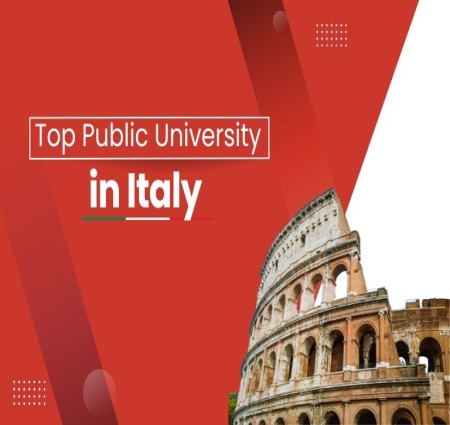 Studying in Italy is a dream for many international students. The country is home to some of the oldest and most respected universities in Europe, and it offers excellent education at affordable tuition fees. If you are planning to study abroad, knowing how to apply to Public Universities in Italy is an important step. This guide will explain the process in simple words, with practical tips for st...
Read More
Studying in Italy is a dream for many international students. The country is home to some of the oldest and most respected universities in Europe, and it offers excellent education at affordable tuition fees. If you are planning to study abroad, knowing how to apply to Public Universities in Italy is an important step. This guide will explain the process in simple words, with practical tips for st...
Read More
Studying in Italy is a dream for many international students. The country is home to some of the oldest and most respected universities in Europe, and it offers excellent education at affordable tuition fees. If you are planning to study abroad, knowing how to apply to Public Universities in Italy is an important step. This guide will explain the process in simple words, with practical tips for students.
Italy has a rich tradition of education, with universities that are centuries old and globally recognized. Many students prefer Public Universities in Italy because:
Tuition fees are lower compared to private institutions.
They offer a wide range of programs in English and Italian.
Many are ranked among the best universities in Europe.
International students can access scholarships and grants.
The vibrant culture, history, and student life make Italy an exciting destination.
The first step is to research different Public Universities in Italy and find the one that suits your goals. Look at:
Courses available in English and Italian.
Location of the university (Rome, Milan, Bologna, Florence, etc.).
International rankings and reputation.
Scholarships and financial aid options.
Some names often come up as a top Public University in Italy, such as:
University of Bologna
Sapienza University of Rome
University of Milan
Politecnico di Milano
University of Padua
These institutions are respected worldwide and attract thousands of students each year.
After shortlisting universities, focus on selecting the right program. Italy offers a variety of options, from arts and architecture to engineering and medicine. Many students also look for the Best Courses in Italy in fields like:
Fashion and Luxury Management
Architecture and Design
Medicine and Surgery
Engineering and Computer Science
Business and Economics
Make sure the program aligns with your career plans and check if it is taught in English if you are not fluent in Italian.
Every university has its own requirements, but the general process for Public Universities in Italy includes:
High school diploma or bachelor's degree (depending on the program).
Transcripts of academic records.
English language certificate (IELTS, TOEFL) or Italian language certificate if required.
Valid passport.
Letter of motivation and sometimes recommendation letters.
Some programs, especially medicine, architecture, and engineering, may also require entrance exams.
Make sure your documents are ready before applying. Commonly required papers include:
Educational certificates translated into Italian or English.
Proof of language proficiency.
Passport-size photographs.
Copy of your passport.
Application form provided by the university.
Pro Tip: Always check the official university website for the most updated list of required documents.
Most applications are submitted online. International students often apply through:
University Website – Direct application to the university.
Universitaly Portal – An official platform to apply for certain programs and manage pre-enrollment.
Deadlines are very important, usually between January and April for September intake. Always apply as early as possible.
Some universities may ask for a small application fee (usually between €30–50). Payment is done online during the application process.
Once your documents are reviewed, the university will issue an admission letter if you are accepted. With this letter, you can move to the next step, which is applying for a student visa.
To study in Italy, non-EU students need a student visa. The steps are:
Submit your admission letter from a Public University in Italy.
Show proof of financial support for living costs.
Provide proof of accommodation in Italy.
Have health insurance valid in Italy.
You will need to apply at the nearest Italian consulate or embassy in your country.
Once you arrive in Italy, you need to complete the registration process:
Apply for a residence permit within 8 days of arrival.
Register with the university's international office.
Pay the tuition fees.
Most Public Universities in Italy calculate tuition fees based on family income, so you might pay between €500 and €3,000 per year, which is affordable compared to other European countries.
Start preparing at least one year before your chosen intake.
Keep multiple copies of documents.
Double-check translation and legalization requirements.
Apply to more than one top Public University in Italy to increase your chances.
Look for scholarships early.
International students can apply for several scholarships offered by the Italian government and universities. These scholarships help reduce tuition fees and living costs. Many Public Universities in Italy provide:
Merit-based scholarships.
Regional grants (based on financial need).
Fee waivers for outstanding students.
This makes studying at a top Public University in Italy even more affordable.
Life in Italy is not just about studies. Students enjoy:
Affordable lifestyle compared to other European countries.
Rich culture, art, and history.
Delicious food and vibrant cities.
Opportunities to travel across Europe.
For students who choose the Best Courses in Italy, the experience is both academically rewarding and personally enriching.
Applying to Public Universities in Italy may look complex at first, but with proper planning, the process becomes smooth. From choosing a top Public University in Italy to finding the Best Courses in Italy, every step brings you closer to a world-class education and an unforgettable experience.
Start early, prepare your documents carefully, and stay organized. Studying in Italy will open doors to excellent opportunities, both in education and in life.
Read Full Blog... Finding the best Italian education consultants in Pune is the first step for students who dream of studying abroad in Italy. Pune, known as the "Oxford of the East," has a large number of students who wish to explore international education. Italy, with its globally recognized universities, affordable tuition fees, and cultural richness, is now one of the top choices for higher studies. Whether it...
Read More
Finding the best Italian education consultants in Pune is the first step for students who dream of studying abroad in Italy. Pune, known as the "Oxford of the East," has a large number of students who wish to explore international education. Italy, with its globally recognized universities, affordable tuition fees, and cultural richness, is now one of the top choices for higher studies. Whether it...
Read More
Finding the best Italian education consultants in Pune is the first step for students who dream of studying abroad in Italy. Pune, known as the "Oxford of the East," has a large number of students who wish to explore international education. Italy, with its globally recognized universities, affordable tuition fees, and cultural richness, is now one of the top choices for higher studies. Whether it's engineering, medicine, fashion, design, or even an MBA in Italy, students need professional guidance to make the right decisions and complete their application process smoothly.
Italy is not only known for its art, architecture, and history but also for its academic excellence. Students from Pune and across India are increasingly attracted to Italy for higher studies because of the many benefits:
World-Class Universities: Italy is home to institutions like the University of Bologna, Politecnico di Milano, and Sapienza University of Rome.
Affordable Tuition: Costs are lower compared to other Western countries, making it budget-friendly.
Scholarship Opportunities: Both government and university scholarships help international students reduce expenses.
Diverse Programs: Students can choose from courses in medicine, fashion, design, engineering, business, and more.
English-Taught Courses: Many bachelor's, master's, and MBA in Italy programs are offered in English, making it easier for Indian students.
Cultural Exposure: Studying in Italy provides students with a unique cultural experience alongside their academics.
The process of studying abroad is not only about securing admission; it involves several steps such as profile evaluation, university selection, documentation, scholarships, and visa applications. This is why students prefer to approach Italy Education Consultants in Pune, who provide expert guidance at every stage.
Counseling Sessions – Consultants analyze your academic profile, interests, and career goals.
University Selection – They suggest the best-fit universities and courses in Italy.
Application Support – Assistance in preparing SOPs, essays, resumes, and filling applications correctly.
Scholarship Guidance – Helping students apply for grants and financial aid.
Visa Assistance – Step-by-step help with documentation, financial proof, and interviews.
Pre-Departure Guidance – Information about accommodation, lifestyle, and travel.
By guiding students through these stages, consultants save time, reduce stress, and improve success chances.
When looking for the best Italian education consultants in Pune, students should focus on expertise and credibility. Not all consultants specialize in Italy, so it's important to choose carefully.
Experience with Italy Admissions: Consultants who regularly send students to Italian universities know the process better.
Updated Knowledge: Italy has unique admission cycles and requirements. A good consultant stays updated.
Transparency: No hidden charges or false promises.
Student-Centric Guidance: Focuses on student's needs rather than pushing specific universities.
Visa Success Rate: A proven record of successful visa applications.
Comprehensive Services: From admission counseling to arrival support in Italy.
Choosing the right consultant is an investment in your education journey.
Among the various programs, an MBA in Italy is becoming very popular among Indian students. Italian business schools are gaining recognition for their high-quality programs, affordability, and global exposure.
Cost-Effective: Fees are lower than those in the US or UK.
English Programs: No need to be fluent in Italian, as many MBAs are taught in English.
Scholarships for Indians: Many universities offer scholarships based on merit and need.
Industry Connections: Opportunity to network with global companies.
Cultural Diversity: Learning alongside students from multiple countries.
Top schools like Bocconi University, Politecnico di Milano School of Management, and LUISS Business School are highly sought after by Pune students.
When you hire Italy Education Consultants in Pune, you gain access to complete support for your study abroad journey.
Profile Evaluation – Understanding strengths and suggesting suitable courses.
Course and University Guidance – Based on career goals and academic performance.
Application Preparation – Ensuring all details are correct and complete.
Document Assistance – Help with transcripts, recommendations, and financial papers.
Visa Processing – Guidance for filling visa applications and interview preparation.
Accommodation Help – Suggestions for affordable student housing in Italy.
Language Preparation – Basic Italian language resources for day-to-day life.
With many consultants available, students should keep the following in mind before making a decision:
Check Success Stories – Look for reviews from students who have gone to Italy through them.
University Partnerships – Verify their tie-ups with reputed Italian institutions.
Transparency – Choose a consultant who gives clear details about fees and services.
Personalized Counseling – A good consultant will focus on your unique profile.
Track Record – Higher visa and admission success rates mean more reliability.
Pune students are highly career-focused and eager to gain international exposure. Italy offers the perfect mix of academic excellence and affordability. Some reasons why Italy is gaining popularity among Pune students include:
Strong demand for fashion, design, and architecture programs.
Affordable medical and engineering courses compared to Western countries.
Opportunity to study in globally ranked universities.
Pathways for research and employment in Europe after graduation.
Wide acceptance of Indian students by Italian universities.
Italy has become one of the most attractive destinations for higher education, offering quality education, affordability, and global recognition. For students in Pune, choosing the best Italian education consultants in Pune ensures they receive the right guidance at every step-from course selection and applications to scholarships and visas. With the help of professional Italy Education Consultants in Pune, your study abroad journey becomes easier and more successful.
Whether your dream is to study engineering, medicine, arts, or pursue an MBA in Italy, the right consultant can turn your ambition into reality. Start your journey today with trusted experts and move one step closer to your international career.
Read Full Blog...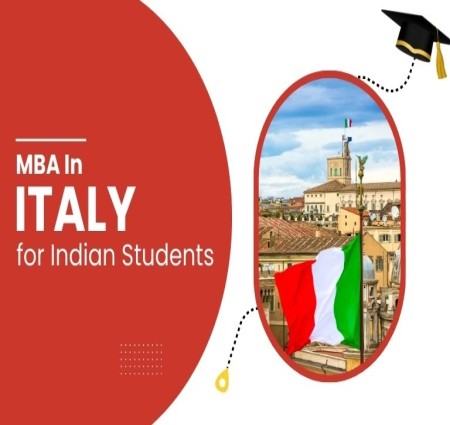 Italy is one of Europe's most attractive study destinations, not only for art and culture but also for higher education. Many international students are now choosing to pursue their MBA in Italy because of the country's excellent universities, global recognition, and rich lifestyle. Whether you are finishing your Bachelor in Italy or planning to come from abroad, Italy offers exciting opportunitie...
Read More
Italy is one of Europe's most attractive study destinations, not only for art and culture but also for higher education. Many international students are now choosing to pursue their MBA in Italy because of the country's excellent universities, global recognition, and rich lifestyle. Whether you are finishing your Bachelor in Italy or planning to come from abroad, Italy offers exciting opportunitie...
Read More
Italy is one of Europe's most attractive study destinations, not only for art and culture but also for higher education. Many international students are now choosing to pursue their MBA in Italy because of the country's excellent universities, global recognition, and rich lifestyle. Whether you are finishing your Bachelor in Italy or planning to come from abroad, Italy offers exciting opportunities for your career growth.
In this article, we will explore the key benefits of studying MBA in Italy, especially for international learners and MBA in Italy for Indian students.
Italy is home to some of Europe's most prestigious universities and business schools. Institutions such as SDA Bocconi School of Management, Politecnico di Milano School of Management, and LUISS Business School rank highly in global MBA rankings.
Modern curriculum with international focus
Collaboration with global industries and companies
Opportunities to learn from highly experienced faculty
For anyone who has already completed a Bachelor in Italy, continuing education with an MBA becomes a smooth and natural step.
One of the main advantages of studying an MBA in Italy is the relatively affordable tuition fees compared to destinations like the USA, UK, or Australia.
Tuition fees are usually lower while still providing quality education.
Italian universities often have government-supported scholarships.
Students can apply for regional or merit-based financial aid.
This makes MBA in Italy for Indian students particularly attractive, as cost plays a big role in choosing a study destination.
Italy offers a wide range of scholarships for international students. These scholarships are provided by universities, the Italian government, and regional authorities.
Merit-based scholarships reduce overall tuition costs.
Need-based financial aid supports students from diverse backgrounds.
Many opportunities are available for MBA in Italy for Indian students, making it easier to manage expenses.
Studying an MBA in Italy gives students a chance to live in the heart of Europe. Italy is well connected to other European countries, making travel and networking very easy.
Direct access to European job markets
Exposure to different cultures and business environments
International networking opportunities with classmates from across the globe
This global exposure is especially valuable for those who completed a Bachelor in Italy and now want to move into management studies.
Italy has a growing demand for professionals with international business skills. Top companies in fashion, design, luxury goods, automotive, and finance are based here.
Internship opportunities during MBA programs
Networking with industry leaders and global companies
Wide scope in sectors like fashion, technology, finance, and tourism
For MBA in Italy for Indian students, this creates chances to work in multinational firms or bring back global experience to India.
Many MBA programs in Italy are taught in English, making it easier for international students to adapt.
Removes language barrier in academics
Easier communication with classmates from different backgrounds
Smooth transition for those coming from English-medium education systems
Students completing a Bachelor in Italy also find it convenient since most universities offer bilingual learning opportunities.
Italy is not only about education; it is also about experience. Studying an MBA in Italy allows students to live in a country famous for its history, architecture, fashion, and food.
Rich cultural experience with museums, art, and traditions
High-quality lifestyle at affordable living costs compared to other European cities
Opportunities to travel within Italy and Europe
Italy is becoming a hub for international students. Universities provide dedicated support services, including:
Help with visa processes
Orientation programs for new students
Affordable housing options and student discounts
For MBA in Italy for Indian students, this support system helps in adjusting to a new country smoothly.
An MBA in Italy is recognized across the world. Italian universities have strong academic reputations and many are accredited by global institutions.
Degrees carry international value
Easier to apply for jobs worldwide
Good reputation in both Europe and beyond
Students who start with a Bachelor in Italy and continue with an MBA often enjoy seamless career progression.
Living and studying abroad develops more than just academic skills. Students gain confidence, independence, and intercultural understanding.
Exposure to international classmates
Development of leadership and management skills
Enhanced problem-solving and adaptability
These benefits stay with students throughout their careers, whether they remain in Italy or return to their home country.
Conclusion
Choosing to study an MBA in Italy can be a life-changing decision. From world-class universities and affordable tuition to international career opportunities and rich cultural experiences, Italy offers everything a student needs for growth.
For those considering higher studies, especially MBA in Italy for Indian students, the country provides a perfect balance of education, lifestyle, and career options. And if you have already completed your Bachelor in Italy, continuing with an MBA here makes even more sense.
Italy is not just about history and art-it is also a future-ready destination for business education and professional success.
Read Full Blog... Studying business in Europe has become a dream for many Indian students. Among the top choices, Italy is quickly gaining recognition for its high-quality education, affordable fees, and cultural richness. If you are looking for the best business schools in Italy for Indian students, this guide will help you explore everything-from top universities to courses, scholarships, and career opportunities...
Read More
Studying business in Europe has become a dream for many Indian students. Among the top choices, Italy is quickly gaining recognition for its high-quality education, affordable fees, and cultural richness. If you are looking for the best business schools in Italy for Indian students, this guide will help you explore everything-from top universities to courses, scholarships, and career opportunities...
Read More
Studying business in Europe has become a dream for many Indian students. Among the top choices, Italy is quickly gaining recognition for its high-quality education, affordable fees, and cultural richness. If you are looking for the best business schools in Italy for Indian students, this guide will help you explore everything-from top universities to courses, scholarships, and career opportunities.
Italy is not only famous for fashion, design, and art but also for its excellent education system. For Indian students, choosing Italy offers many advantages:
Affordable tuition compared to the US or UK.
Many programs are taught in English.
Opportunities to learn in a multicultural environment.
Access to European internships and job placements.
Strong emphasis on research, innovation, and international exposure.
If you are searching for the top B schools in Italy, here are some leading institutions that are popular among Indian and international students:
Ranked among the best business schools in Italy.
Known for its MBA, Executive MBA, and Master's programs.
Offers global networking and strong corporate connections.
Highly competitive but worth the investment.
Located in the capital city with strong industry ties.
Offers MBA, Masters in Management, and Finance programs.
Great placement opportunities in Italy and abroad.
Part of Politecnico di Milano, famous for innovation and technology.
Strong in entrepreneurship, management, and digital business.
Affordable fees compared to private schools.
Part of one of the oldest universities in the world.
Known for international MBA and specialized Master's programs.
Offers scholarships for Indian and international students.
Public universities offering business and management programs.
Lower tuition fees compared to private B-Schools.
Programs taught in English, with global exposure.
Indian students often look for schools that provide English-taught programs, affordable tuition, and placement support. Some key highlights include:
SDA Bocconi – Global ranking, corporate connections, and strong alumni.
LUISS Business School – Great for business in Rome's international market.
University of Bologna – Balance of tradition, research, and modern business education.
If you are wondering about the Best Course in Italy for Indian students in business, here are some popular options:
MBA (Master of Business Administration) – Best for leadership and management roles.
Master in Finance – Great for banking, consulting, and investment careers.
Master in Marketing and Communication – Ideal for students interested in digital marketing and brand management.
International Management – Suited for those planning global business careers.
Entrepreneurship and Innovation Programs – For students planning to start their own ventures.
Applying to the best business schools in Italy is straightforward if you follow the steps carefully:
Choose the University – Select from the top B-Schools that match your career goals.
Check Requirements – Most schools need a bachelor's degree, English language test scores (IELTS/TOEFL), and sometimes GMAT/GRE.
Prepare Documents – Academic transcripts, SOP, CV, and recommendation letters.
Apply Online – Submit your application on the official website.
Wait for Offer – If selected, you'll receive an admission letter.
Apply for Visa – Indian students must apply for an Italian student visa.
Italy is known for providing financial aid and scholarships. Popular options include:
Italian Government Scholarships – Available for international students.
University-based Scholarships – Bocconi, Bologna, and Padua offer merit-based aid.
Regional Scholarships – Offered by Italian regions to support international students.
Studying at the top B schools in Italy is more affordable than in many Western countries.
Tuition Fees – €2,500 to €20,000 per year (depending on public or private).
Living Costs – Around €700 to €1,200 per month.
Scholarships – Can reduce tuition costs significantly.
Graduates from the best business schools in Italy enjoy global career opportunities. Some popular sectors include:
Finance and Banking
Consulting
Marketing and Advertising
Technology and Startups
International Trade
Italy also offers post-study work permits, allowing Indian students to gain international work experience.
Learn some basic Italian-it helps in daily life and internships.
Apply early to secure scholarships.
Network with professors, alumni, and peers.
Explore internships during your studies.
Take advantage of Europe's student mobility programs.
For Indian students seeking international exposure, world-class education, and affordable tuition, Italy is a fantastic choice. With institutions like SDA Bocconi, LUISS, and University of Bologna, the country offers access to the best business schools in Italy. Whether you want to pursue an MBA, finance, or marketing, you will find the Best Course in Italy to suit your career goals. Studying here not only shapes your professional journey but also allows you to experience Europe's rich culture and lifestyle.
Read Full Blog... Studying in Italy has become a dream for many students across the globe. Among the top universities in Italy, the University of Trento Italy stands out for its academic excellence, international-friendly environment, and career-oriented programs. If you are planning to apply to Trento University, this guide will walk you through every step of the process in simple language. Why Choose University o...
Read More
Studying in Italy has become a dream for many students across the globe. Among the top universities in Italy, the University of Trento Italy stands out for its academic excellence, international-friendly environment, and career-oriented programs. If you are planning to apply to Trento University, this guide will walk you through every step of the process in simple language. Why Choose University o...
Read More
Studying in Italy has become a dream for many students across the globe. Among the top universities in Italy, the University of Trento Italy stands out for its academic excellence, international-friendly environment, and career-oriented programs. If you are planning to apply to Trento University, this guide will walk you through every step of the process in simple language.
The University of Trento Italy is one of the most reputed institutions for international education. It consistently ranks among the top universities in Italy and offers a wide range of programs taught in both English and Italian.
Reasons international students choose Trento University:
High academic standards and strong global rankings
Affordable tuition compared to many Western countries
Scholarships and funding opportunities for international students
Safe, student-friendly city with a strong community atmosphere
Programs in English at the undergraduate, master's, and doctoral levels
Before applying, you need to decide which program suits your academic and career goals.
Visit the official website of University of Trento Italy and check the course catalog.
Look for English-taught bachelor's, master's, or PhD programs.
Review program details, eligibility, and duration.
Make a shortlist of courses that fit your interest.
International students must meet specific academic and language criteria before applying to Trento University.
General requirements include:
A high school diploma (for undergraduate programs)
A bachelor's degree (for master's programs)
A relevant master's degree (for PhD programs)
English proficiency test scores (IELTS/TOEFL) if applying to English-taught programs
Italian language proficiency for Italian-taught programs
Having the correct documents ready will make your application process smooth.
Required documents for University of Trento Italy include:
Academic transcripts (translated and legalized if needed)
Proof of English or Italian language proficiency
Copy of passport
Statement of purpose or motivation letter
Letters of recommendation (for certain programs)
Updated CV (mainly for postgraduate applications)
Portfolio (for specific courses such as design or architecture)
The application process at University of Trento Italy is online and straightforward.
Go to the official admissions portal of Trento University.
Create an account and register as a new applicant.
Fill in your personal details and select the course.
Upload the scanned copies of required documents.
Pay the application fee (if applicable).
Submit your application before the deadline.
Some programs at University of Trento Italy may require entrance exams or interviews.
Undergraduate applicants might have to take a test depending on the course.
Master's programs often evaluate students based on academic performance and interviews.
PhD candidates usually go through an interview process to assess research skills.
If your program requires an entrance exam, prepare well in advance.
International students applying to Trento University can access several scholarships and funding opportunities.
Popular options include:
UniTrento Scholarship for international students
Italian Government Scholarships
Regional scholarships for low-income students
Scholarships are often awarded based on merit and financial need, so always apply early.
If your application is successful, you will receive an admission offer letter.
Accept the offer within the given deadline.
Pay any initial enrollment or confirmation fees.
Prepare your documents for the visa application process.
As an international student, you will need a visa to study in Italy.
Visa steps for University of Trento Italy:
Apply at the Italian Embassy or Consulate in your home country.
Submit the offer letter, proof of funds, passport, and accommodation details.
Attend the visa interview if required.
Once approved, you will receive your Italian student visa.
The University of Trento Italy provides various accommodation options for international students.
University-managed residences
Shared student apartments
Private rentals in the city
The cost of living in Trento is reasonable compared to bigger Italian cities, making it a budget-friendly option among universities in Italy.
After receiving your visa and arranging accommodation, you can travel to Italy.
On arrival:
Attend the orientation sessions organized by Trento University.
Complete the enrollment process at the university.
Apply for a residence permit within eight days of arrival.
Start early to avoid last-minute stress.
Double-check deadlines and entry requirements.
Keep multiple copies of documents ready.
Stay updated with emails from the admissions office.
Explore scholarship opportunities to reduce financial burden.
Studying at Trento University is not just about academics. The city of Trento is known for its rich history, culture, and student-friendly environment. International students enjoy a mix of Italian traditions and modern lifestyles. The university offers cultural activities, student associations, and career support services.
Applying to the University of Trento Italy as an international student may seem challenging at first, but with proper preparation, it becomes a smooth process. From choosing the right program to applying for scholarships, arranging visas, and settling in, each step brings you closer to your dream of studying at one of the best universities in Italy.
By following the steps in this guide, you can confidently apply to Trento University and begin your journey toward a world-class education in Italy.
Read Full Blog...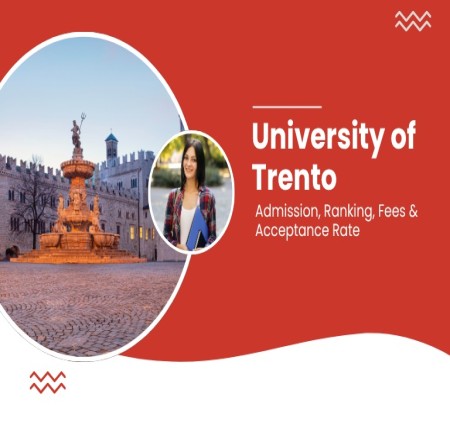 Studying in Italy has become a dream for many students across the globe. Among the top universities in Italy, the University of Trento Italy stands out for its academic excellence, international-friendly environment, and career-oriented programs. If you are planning to apply to Trento University, this guide will walk you through every step of the process in simple language. Why Choose University o...
Read More
Studying in Italy has become a dream for many students across the globe. Among the top universities in Italy, the University of Trento Italy stands out for its academic excellence, international-friendly environment, and career-oriented programs. If you are planning to apply to Trento University, this guide will walk you through every step of the process in simple language. Why Choose University o...
Read More
Studying in Italy has become a dream for many students across the globe. Among the top universities in Italy, the University of Trento Italy stands out for its academic excellence, international-friendly environment, and career-oriented programs. If you are planning to apply to Trento University, this guide will walk you through every step of the process in simple language.
The University of Trento Italy is one of the most reputed institutions for international education. It consistently ranks among the top universities in Italy and offers a wide range of programs taught in both English and Italian.
Reasons international students choose Trento University:
High academic standards and strong global rankings
Affordable tuition compared to many Western countries
Scholarships and funding opportunities for international students
Safe, student-friendly city with a strong community atmosphere
Programs in English at the undergraduate, master's, and doctoral levels
Before applying, you need to decide which program suits your academic and career goals.
Visit the official website of University of Trento Italy and check the course catalog.
Look for English-taught bachelor's, master's, or PhD programs.
Review program details, eligibility, and duration.
Make a shortlist of courses that fit your interest.
International students must meet specific academic and language criteria before applying to Trento University.
General requirements include:
A high school diploma (for undergraduate programs)
A bachelor's degree (for master's programs)
A relevant master's degree (for PhD programs)
English proficiency test scores (IELTS/TOEFL) if applying to English-taught programs
Italian language proficiency for Italian-taught programs
Having the correct documents ready will make your application process smooth.
Required documents for University of Trento Italy include:
Academic transcripts (translated and legalized if needed)
Proof of English or Italian language proficiency
Copy of passport
Statement of purpose or motivation letter
Letters of recommendation (for certain programs)
Updated CV (mainly for postgraduate applications)
Portfolio (for specific courses such as design or architecture)
The application process at University of Trento Italy is online and straightforward.
Go to the official admissions portal of Trento University.
Create an account and register as a new applicant.
Fill in your personal details and select the course.
Upload the scanned copies of required documents.
Pay the application fee (if applicable).
Submit your application before the deadline.
Some programs at University of Trento Italy may require entrance exams or interviews.
Undergraduate applicants might have to take a test depending on the course.
Master's programs often evaluate students based on academic performance and interviews.
PhD candidates usually go through an interview process to assess research skills.
If your program requires an entrance exam, prepare well in advance.
International students applying to Trento University can access several scholarships and funding opportunities.
Popular options include:
UniTrento Scholarship for international students
Italian Government Scholarships
Regional scholarships for low-income students
Scholarships are often awarded based on merit and financial need, so always apply early.
If your application is successful, you will receive an admission offer letter.
Accept the offer within the given deadline.
Pay any initial enrollment or confirmation fees.
Prepare your documents for the visa application process.
As an international student, you will need a visa to study in Italy.
Visa steps for University of Trento Italy:
Apply at the Italian Embassy or Consulate in your home country.
Submit the offer letter, proof of funds, passport, and accommodation details.
Attend the visa interview if required.
Once approved, you will receive your Italian student visa.
The University of Trento Italy provides various accommodation options for international students.
University-managed residences
Shared student apartments
Private rentals in the city
The cost of living in Trento is reasonable compared to bigger Italian cities, making it a budget-friendly option among universities in Italy.
After receiving your visa and arranging accommodation, you can travel to Italy.
On arrival:
Attend the orientation sessions organized by Trento University.
Complete the enrollment process at the university.
Apply for a residence permit within eight days of arrival.
Start early to avoid last-minute stress.
Double-check deadlines and entry requirements.
Keep multiple copies of documents ready.
Stay updated with emails from the admissions office.
Explore scholarship opportunities to reduce financial burden.
Studying at Trento University is not just about academics. The city of Trento is known for its rich history, culture, and student-friendly environment. International students enjoy a mix of Italian traditions and modern lifestyles. The university offers cultural activities, student associations, and career support services.
Applying to the University of Trento Italy as an international student may seem challenging at first, but with proper preparation, it becomes a smooth process. From choosing the right program to applying for scholarships, arranging visas, and settling in, each step brings you closer to your dream of studying at one of the best universities in Italy.
By following the steps in this guide, you can confidently apply to Trento University and begin your journey toward a world-class education in Italy.
Read Full Blog...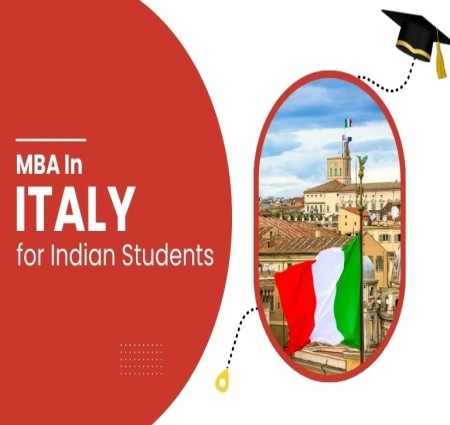 Studying for an MBA in Italy is becoming a popular choice among Indian students who dream of gaining global exposure, affordable education, and excellent career opportunities. Italy is home to some of the oldest and most respected universities in Europe, offering world-class MBA programs with modern teaching methods. For Indian students, choosing the right MBA university is the first and most impo...
Read More
Studying for an MBA in Italy is becoming a popular choice among Indian students who dream of gaining global exposure, affordable education, and excellent career opportunities. Italy is home to some of the oldest and most respected universities in Europe, offering world-class MBA programs with modern teaching methods. For Indian students, choosing the right MBA university is the first and most impo...
Read More
Studying for an MBA in Italy is becoming a popular choice among Indian students who dream of gaining global exposure, affordable education, and excellent career opportunities. Italy is home to some of the oldest and most respected universities in Europe, offering world-class MBA programs with modern teaching methods.
For Indian students, choosing the right MBA university is the first and most important step. This blog will guide you through the top MBA universities in Italy, admission process, costs, scholarships, and benefits of studying in this European destination.
Globally recognized universities and business schools
Affordable tuition compared to US and UK
Wide availability of English-taught programs
Cultural diversity and rich lifestyle
Post-study work opportunities in Europe
An MBA in Italy for Indian students not only provides a high-quality education but also opens doors to career opportunities across Europe.
Ranked among the top business schools in Europe
Full-time MBA duration: 1 year
Strong corporate connections and global alumni network
Popular for leadership and management specializations
Offers full-time, part-time, and executive MBA programs
Strong links with Italian industries and global companies
Focus on innovation, digital transformation, and international exposure
Known for its international MBA programs
Strong emphasis on technology, design, and management
Excellent opportunities for networking with global professionals
One of the oldest universities in the world
Offers Global MBA with multiple specializations
Affordable tuition fees with high academic standards
Provides International Full-Time MBA
Strong collaboration with industries and global institutions
Flexible programs designed for international students
Offers MBA with focus on management and innovation
Affordable for international students
Opportunities to work with research-driven faculty
Most MBA universities in Italy follow similar requirements. Here's what Indian students need:
A bachelor's degree in any field
GMAT/GRE scores (some universities waive this)
English language proficiency (IELTS/TOEFL)
Updated CV or Resume
Statement of Purpose (SOP)
Letters of Recommendation
Passport and academic transcripts
Tip: Some universities also offer MBA in Italy without GMAT, but students must prove strong academic or professional backgrounds.
Compared to other European countries, Italy offers affordable MBA programs.
Average tuition fees: €15,000 – €35,000 per year
Living costs: €600 – €1000 per month (depending on city)
One-year MBA programs help students save money while gaining fast-track career opportunities
Many universities and government bodies offer scholarships in Italy to support Indian students. These scholarships reduce the financial burden and make education more affordable.
Popular options include:
Italian Government Scholarships for International Students
Merit-based scholarships offered by universities
Regional scholarships in specific Italian provinces
Need-based financial aid programs
Tip: Apply early for scholarships to improve your chances of getting financial support.
International exposure with classmates from different countries
Access to internships and career opportunities in Europe
Learning from globally experienced faculty
Affordable living costs compared to other European destinations
Opportunity to explore Italy's rich culture, art, and lifestyle
An MBA in Italy can lead to global career paths. Students often find jobs in:
International business and trade
Consulting firms
Finance and banking
Technology and innovation companies
Luxury brand management
Start-ups and entrepreneurship
With Italy being home to global companies like Ferrari, Gucci, Fiat, and Prada, MBA graduates have the chance to work in prestigious organizations.
Research universities and compare MBA specializations
Check eligibility and language requirements in advance
Apply for scholarships early
Prepare strong SOP and recommendation letters
Connect with alumni for guidance
Plan living expenses and part-time work opportunities
Choosing the right university is the most important decision when planning an MBA in Italy. With top-ranked institutions like SDA Bocconi, LUISS Business School, and Politecnico di Milano, Indian students can find excellent opportunities for growth. Affordable fees, wide availability of English-taught programs, and various scholarships in Italy make this destination ideal for higher education.
For ambitious students, pursuing an MBA in Italy for Indian students means global exposure, world-class education, and a bright future in international business.
Read Full Blog... Studying abroad is a dream for many Indian students, and Italy has become one of the most popular destinations. From world-class universities to affordable tuition and a rich cultural experience, Italy offers everything a student could ask for. But the journey to study in Italy is not simple-it involves applications, documentation, and visas. This is where the best Italian education consultants in...
Read More
Studying abroad is a dream for many Indian students, and Italy has become one of the most popular destinations. From world-class universities to affordable tuition and a rich cultural experience, Italy offers everything a student could ask for. But the journey to study in Italy is not simple-it involves applications, documentation, and visas. This is where the best Italian education consultants in...
Read More
Studying abroad is a dream for many Indian students, and Italy has become one of the most popular destinations. From world-class universities to affordable tuition and a rich cultural experience, Italy offers everything a student could ask for. But the journey to study in Italy is not simple-it involves applications, documentation, and visas. This is where the best Italian education consultants in Pune play a big role.
If you are planning your higher studies in Italy, here's a complete guide on how to find the right consultants in Pune who can make your journey easier.
Before we dive into consultants, let's understand why Italy is such a good choice:
Top Universities – Institutions like the University of Bologna, Politecnico di Milano, and Sapienza University are globally recognized.
Affordable Education – Tuition fees in Italy are much lower compared to countries like the US or UK.
Scholarship Opportunities – Many regional scholarships are available for international students.
Cultural Experience – Living in Italy exposes you to history, architecture, art, and lifestyle.
Global Career Opportunities – Italy's strong academic reputation helps students build careers worldwide.
These benefits make Italy one of the top study destinations for Indian students.
Applying for studies in another country involves multiple steps. From choosing the right university to applying for a Study Visa in Italy, the process can be confusing. This is where education consultants help.
Guide you in choosing the right university and course.
Provide details about scholarships and application deadlines.
Help prepare and submit your applications correctly.
Assist in preparing financial and visa documents.
Offer advice on accommodation and travel arrangements.
Working with the overseas education consultants for Italy in Pune saves you time, reduces stress, and increases your chances of admission.
Here's how you can identify reliable and professional consultants for Italy:
Look for consultants who specialize in Italy and have been in the field for years.
Experienced consultants understand university requirements and visa processes better.
Not all consultants focus on Italy. Make sure they have successful cases of students placed in Italian universities.
The best Italian education consultants in Pune often have tie-ups with Italian institutions.
Check testimonials and online reviews.
Students usually share their experiences about support, honesty, and success rates.
A good consultant should provide services such as:
University shortlisting
Application assistance
Scholarship guidance
Visa application support
Pre-departure briefing
Genuine consultants will explain their fees clearly.
Avoid consultants who make unrealistic promises or ask for hidden charges.
Since the Study Visa in Italy is an important step, ask about their success record in student visa approvals.
Every student has unique goals. Consultants should provide advice based on your academic background, career plans, and financial situation.
When working with overseas education consultants for Italy in Pune, you can expect a wide range of services. These include:
University Selection: Helping you choose between public and private universities.
Application Process: Filling out forms and preparing documents.
Scholarship Guidance: Information about DSU regional scholarships and university grants.
Visa Assistance: Support for getting your Study Visa in Italy.
Accommodation Help: Guidance on finding safe and affordable housing.
Language Support: Many consultants also provide tips for learning basic Italian.
Not all consultants are trustworthy. Be careful of the following warning signs:
Promises of guaranteed admission or visas.
Asking for very high fees without clear breakdown.
Lack of transparency about the process.
No physical office or verified presence in Pune.
Negative reviews or complaints from students.
Always choose consultants who are transparent and student-friendly.
When you meet a consultant, ask these questions:
How many students have you sent to Italy in the past?
Do you have tie-ups with Italian universities?
What is the success rate for your Study Visa in Italy applications?
What services are included in your package?
Can I contact past students you have helped?
These questions will help you evaluate their reliability.
By working with the best Italian education consultants in Pune, you can enjoy:
Stress-free application process.
Higher chances of securing admission.
Proper guidance on scholarships.
Smooth visa application process.
Confidence in starting your academic journey abroad.
Start early: Begin the process at least 6–12 months before intake.
Research yourself: Don't depend completely on consultants; do your own research about universities.
Stay organized: Keep all your documents ready and updated.
Be realistic: Choose courses and universities that match your academic profile.
Keep track of deadlines: Missing one date can delay your admission.
Studying in Italy is a life-changing decision. With the help of reliable and professional consultants, the process becomes much smoother. Always take time to research, compare, and choose wisely. The right overseas education consultants for Italy in Pune can guide you step by step, from university selection to securing your Study Visa in Italy.
Finding the best Italian education consultants in Pune is about checking their experience, transparency, and student support. Once you find the right consultant, your dream of studying in Italy can easily turn into reality.
Read Full Blog...